
How to Use LORA E5 Development Kit: Examples, Pinouts, and Specs
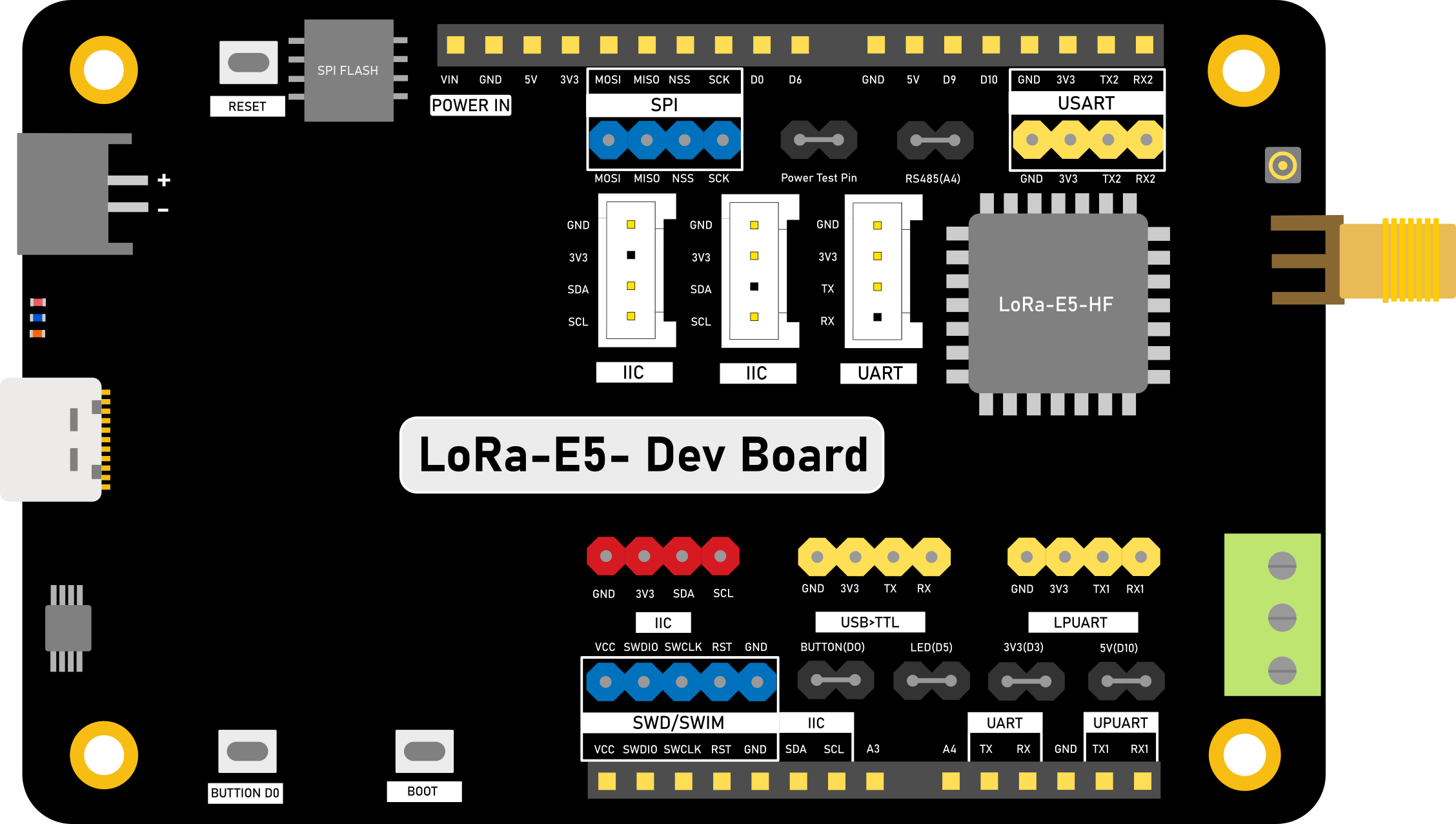
 Design with LORA E5 Development Kit in Cirkit Designer
Design with LORA E5 Development Kit in Cirkit DesignerIntroduction
The LORA E5 Development Kit is a compact and versatile development board designed for LoRa (Long Range) communication. It integrates the LORA-E5 module, which combines a powerful STM32 microcontroller and a Semtech SX126X LoRa transceiver. This development kit is ideal for prototyping IoT applications that require long-range, low-power wireless communication.
Explore Projects Built with LORA E5 Development Kit
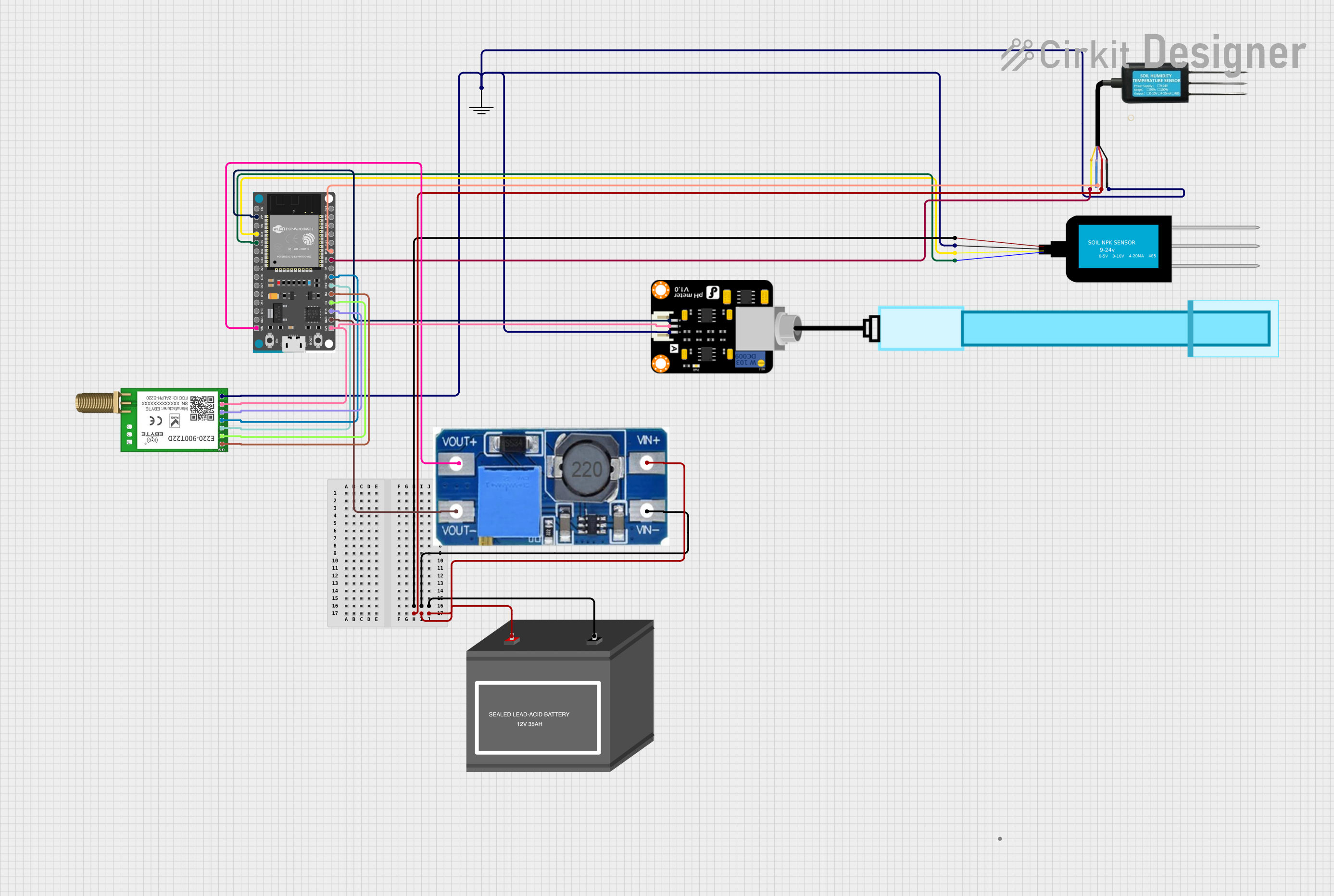
 Open Project in Cirkit Designer
Open Project in Cirkit Designer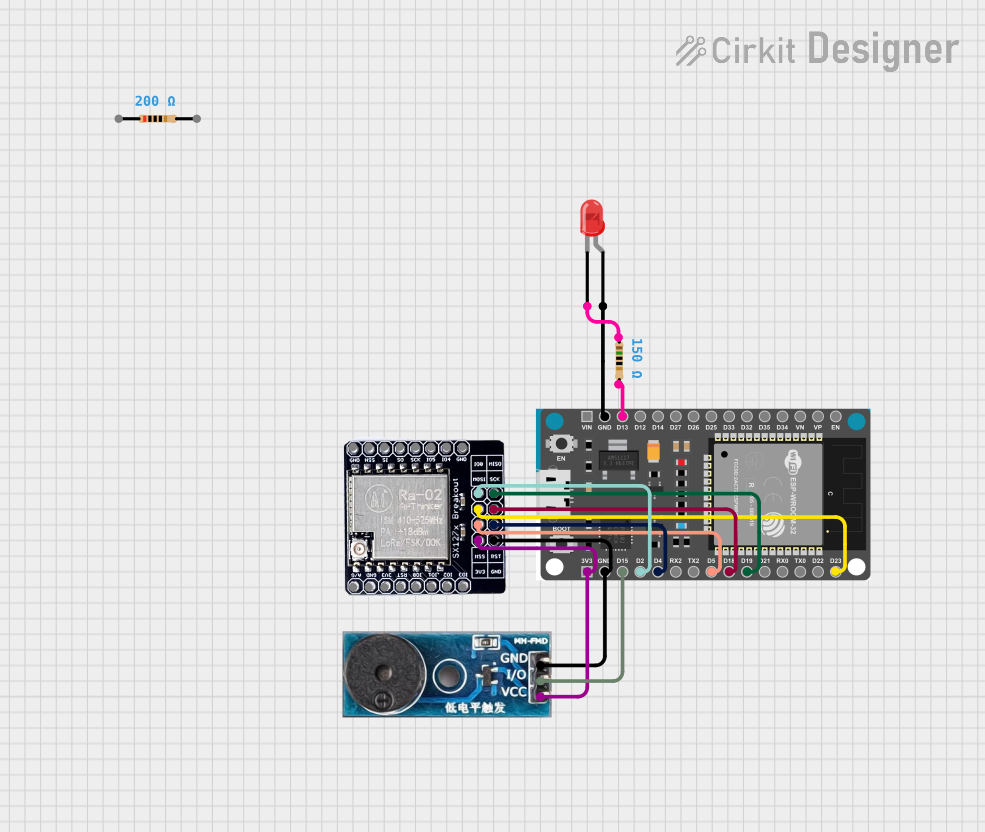
 Open Project in Cirkit Designer
Open Project in Cirkit Designer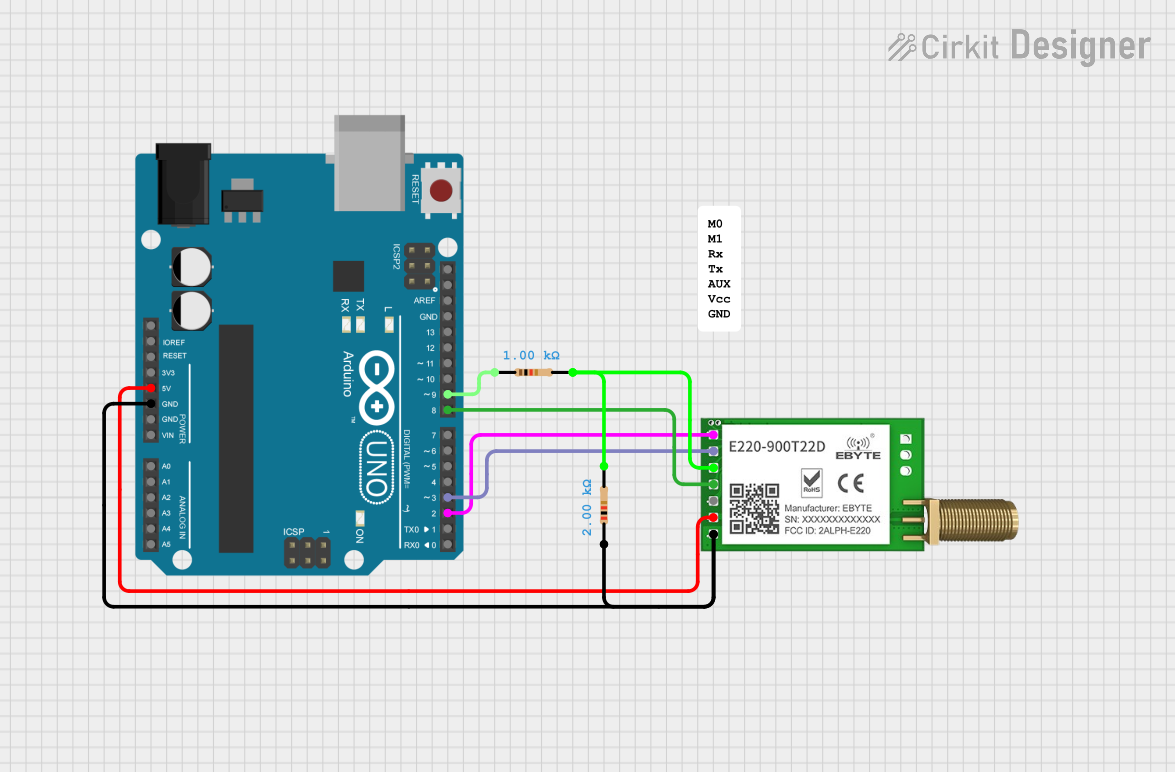
 Open Project in Cirkit Designer
Open Project in Cirkit Designer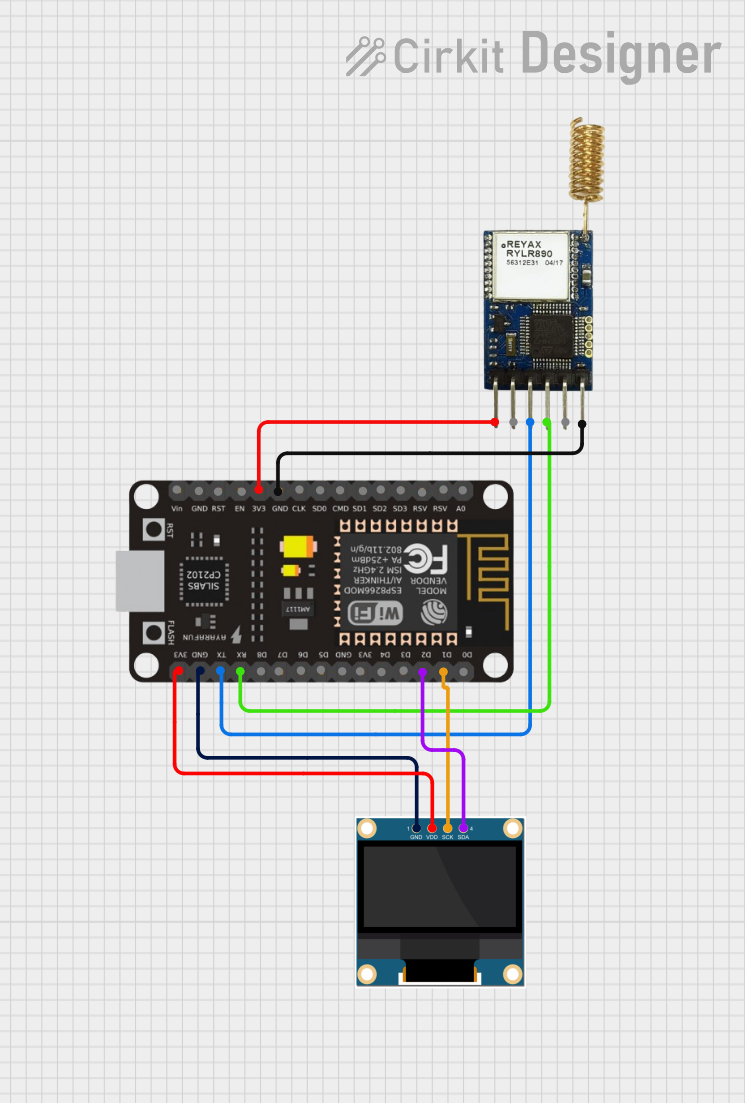
 Open Project in Cirkit Designer
Open Project in Cirkit DesignerExplore Projects Built with LORA E5 Development Kit

 Open Project in Cirkit Designer
Open Project in Cirkit Designer
 Open Project in Cirkit Designer
Open Project in Cirkit Designer
 Open Project in Cirkit Designer
Open Project in Cirkit Designer
 Open Project in Cirkit Designer
Open Project in Cirkit DesignerCommon Applications and Use Cases
- Smart agriculture (e.g., soil moisture monitoring, weather stations)
- Industrial IoT (e.g., asset tracking, predictive maintenance)
- Smart cities (e.g., parking sensors, environmental monitoring)
- Home automation and security systems
- Remote data logging and telemetry
Technical Specifications
Key Technical Details
- Microcontroller: STM32WLE5JC (ARM Cortex-M4, 48 MHz)
- LoRa Transceiver: Semtech SX126X
- Frequency Bands: 150 MHz to 960 MHz (supports global ISM bands)
- Communication Protocols: LoRaWAN, FSK, GFSK, BPSK
- Operating Voltage: 3.3V
- Power Consumption:
- Sleep mode: < 2 µA
- Transmit mode: Up to 22 dBm (160 mA max)
- Interfaces: UART, I2C, SPI, GPIO, ADC
- Antenna Connector: IPEX (external antenna required)
- Dimensions: 24 mm x 24 mm
Pin Configuration and Descriptions
The LORA E5 Development Kit features a 24-pin header for easy prototyping. Below is the pinout description:
| Pin Number | Pin Name | Description |
|---|---|---|
| 1 | VCC | 3.3V Power Supply |
| 2 | GND | Ground |
| 3 | UART_TX | UART Transmit |
| 4 | UART_RX | UART Receive |
| 5 | I2C_SCL | I2C Clock Line |
| 6 | I2C_SDA | I2C Data Line |
| 7 | SPI_SCK | SPI Clock |
| 8 | SPI_MISO | SPI Master In, Slave Out |
| 9 | SPI_MOSI | SPI Master Out, Slave In |
| 10 | SPI_CS | SPI Chip Select |
| 11 | GPIO1 | General Purpose I/O |
| 12 | GPIO2 | General Purpose I/O |
| 13 | ADC1 | Analog-to-Digital Converter Input |
| 14 | ADC2 | Analog-to-Digital Converter Input |
| 15 | RESET | Reset Pin |
| 16 | BOOT | Boot Mode Selection |
| 17 | RF_OUT | RF Output for Antenna |
| 18-24 | NC | Not Connected |
Usage Instructions
How to Use the LORA E5 Development Kit in a Circuit
- Power the Board: Connect the VCC pin to a 3.3V power source and GND to ground.
- Connect the Antenna: Attach an external antenna to the IPEX connector for proper RF performance.
- Interface with a Microcontroller: Use UART, I2C, or SPI to communicate with the LORA E5 module.
- Program the Module: Use AT commands or custom firmware to configure the LoRa settings (e.g., frequency, spreading factor, power).
- Deploy the Circuit: Integrate the development kit into your IoT application and test the communication range.
Important Considerations and Best Practices
- Antenna Placement: Ensure the antenna is placed away from metal objects and other RF sources to avoid interference.
- Power Supply: Use a stable 3.3V power source to prevent communication issues.
- Firmware Updates: Regularly update the firmware to access the latest features and bug fixes.
- Regulatory Compliance: Verify that your application complies with local regulations for LoRa frequency bands and power levels.
Example: Connecting to an Arduino UNO
The LORA E5 Development Kit can be connected to an Arduino UNO via UART. Below is an example of Arduino code to send AT commands to the module:
#include <SoftwareSerial.h>
// Define RX and TX pins for SoftwareSerial
SoftwareSerial loraSerial(10, 11); // RX = Pin 10, TX = Pin 11
void setup() {
// Initialize serial communication with the LORA E5 module
loraSerial.begin(9600); // Default baud rate for LORA E5
Serial.begin(9600); // Serial monitor for debugging
// Send an AT command to check communication
loraSerial.println("AT");
Serial.println("Sent: AT");
}
void loop() {
// Check for responses from the LORA E5 module
if (loraSerial.available()) {
String response = loraSerial.readString();
Serial.println("Received: " + response);
}
// Add a delay to avoid flooding the serial monitor
delay(1000);
}
Troubleshooting and FAQs
Common Issues and Solutions
No Response to AT Commands
- Cause: Incorrect baud rate or wiring.
- Solution: Verify the UART connections and ensure the baud rate is set to 9600.
Poor Communication Range
- Cause: Improper antenna placement or low transmission power.
- Solution: Check the antenna connection and ensure the transmission power is configured correctly.
Module Not Powering On
- Cause: Insufficient power supply.
- Solution: Ensure the VCC pin is receiving a stable 3.3V supply.
Interference with Other Devices
- Cause: Overlapping frequency bands.
- Solution: Configure the module to use a different frequency within the allowed range.
FAQs
Q: Can I use the LORA E5 Development Kit with a 5V microcontroller?
- A: Yes, but you must use a level shifter to convert 5V signals to 3.3V.
Q: What is the maximum range of the LORA E5 Development Kit?
- A: The range depends on environmental factors but can reach up to 10 km in open areas.
Q: How do I update the firmware?
- A: Use the STM32CubeProgrammer tool to flash the latest firmware via the UART interface.
Q: Can I use the LORA E5 Development Kit for LoRaWAN applications?
- A: Yes, the module supports LoRaWAN and can be configured using AT commands or custom firmware.
This documentation provides a comprehensive guide to using the LORA E5 Development Kit for your IoT projects. Happy prototyping!